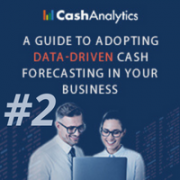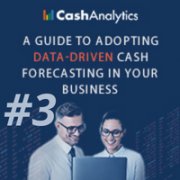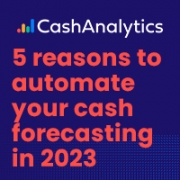Will the next Treasurer be a (mobile) computer?
| 27-9-2017 | Bas Kolenburg |
It’s in the genes of Treasurers to look ahead, to predic t what will be around the corner and to anticipate on the icebergs that your company may hit in the future.
t what will be around the corner and to anticipate on the icebergs that your company may hit in the future.
But what about the forecast of the position of the Treasurer itself? Buzzwords these days are disruption, digitization, blockchain, outsourcing, 3D printing, how computers and robots are transforming whole value chains and are taking over ’our’ jobs. So why not replace the guy or girl in “the ivory tower” who is negotiating with banks, takes care of the bank accounts and manages the financial risks of the business? Will there be a disruptive event or technological development that will replace the human Treasurer in the future?
In short my answer is no, but I am certain that the function of Treasurer will be materially different form current and recent historic practice.
Look what already happened between for instance the 1980s till now and how new developments and technological improvements changed the daily life of the Treasurer. Can you imagine to be a Treasurer in the 1980s without a computer trying to generate a daily total cash balance to your CFO adding up all paper daily statements in various currencies on a manual basis? Or running a cash pool notional or physical with frequent cash sweeping combining decentralized entrepeneurship and central grip on cash? Or try to have decent discussion on the cash conversion cycle with all relevant stakeholders and trying to improve the supply chain from a stack of paper sheets?
So in the last 40 years the life of a Treasurer changed already rapidly and dramatically. And that in a world where significant risks and volatility seem to be the new world order. The risks are plentiful: volatile commodity prices, geopolitical changes, higher debt levels, negative interest rates, liquidity bubbles created by central banks to name a few.
But what is ahead of us? I think that the human Treasurer will be there, for a while, for a number of reasons.
1. Systems need to be implemented
In my treasury experience I have not found a single system that was ‘plug and play’. It takes time, funds and resources to get systems do what they need to do. Try to set up a decent TMS within a month? Will be hardly possible.
2. Systems need to communicate with eachother
In a ideal world you have your ERP(s), TMS, trading platform, payment tools, connections to the bank, reconcilation of bank statements working as if it was one system to be managed via one set of buttons. Reality is that all the systems have interfaces that can be complex and need human interference to manage the exceptions from normal practice. I have seen in my career a lot of excel sheets used to manage these interface connections and they are difficult to delete completely.
3. There is no standard business
Very little corporates can say that for the next 10 years or so business, product mix and client base will be the same. So supporting business with the financial risks will need to be customized tailor made as there is no ‘one size fits all’. Although in the future there will be more powerful information tools available to make the right decision.
4. You need to navigate through the wave(s) of regulation
The credit crisis has caused that new rules are introduced almost on a weekly basis. Non compliance to the rules can lead to business disruptions, fines, sanctions and improving transparancy is pivotal to manage these regulations. Humans need to navigate through these regulation jungle.
The stacks of paper required for KYC and anti-money laundering are increasing by the year and it is up to the Treasurer to manage these processes as efficiently as possible.
5. It is key to have access to funding in support of your strategy, business and organisation
Corporates are looking for a more diversified funding base as banks have retrenched from their dominant position from the past. That means that the Treasurer has these days more sources of funding available such as alternative lending, working capital via supply chain financing, foreign capital markets. More sources lead to more complexity which needs human interference to select the best option(s). And although your KPI sheet and fancy business plan can help you with a certain small crowd funding amount, securing financing is still a result from relationship between a financier and a corporate in need of funding.












